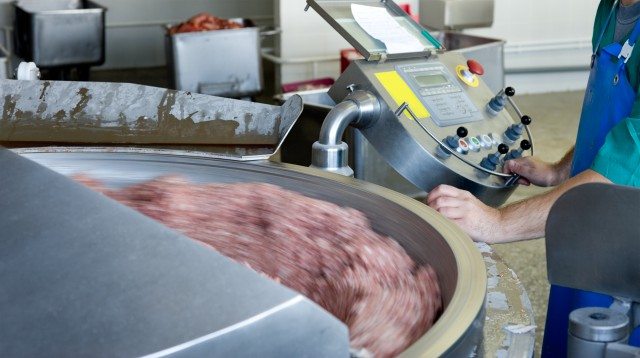Population studies indicate a possible link between intake of meat and cancer.
Meat may contain carcinogens, but it is also an important nutritional source of iron, according to a study carried out by the National Food Institute, Technical University of Denmark.
The study reviewed the scientific evidence in a number of studies of meat intake and cancer risk.
Consumers can reduce the risk by not charring meat during cooking and by eating plenty of whole grains, fruits and vegetables.
The National Food Institute has reviewed the results from a number of American and European population studies and other studies to examine, which compounds in the meat affect cancer risk.
Meat is a part of many Danes’ diet and meat contributes significantly to our intake of several nutrients.
The requirement for iron is particularly high among women of childbearing age and this is met partly through eating meat.
Several large epidemiological studies have shown an association between intake of red meat, but particularly of processed meat and increased risk of colorectal cancer.
The effect is less pronounced in European studies compared to the American studies.
However, a general problem is that different studies define red and processed meat in various ways.
Meat can contain harmful compounds
Haem iron is the type of iron found in meat.
Based on animal studies as well as studies of haem iron’s activity in our gut, it is evident that haem iron may have a carcinogenic effect.
It is not possible to estimate the contribution of haem iron to the total number of colorectal cancer cases, but based on population studies the National Food Institute estimates that only a small proportion of these are due to haem iron.
Both heterocyclic amines (HCAs) and polycyclic aromatic hydrocarbons (PAHs), which are formed when meat is subjected to high temperature cooking, are known carcinogens.
Several population studies have shown an association between development of cancer and consumption of meat that has been heated at high temperatures.
However, there is great uncertainty about the extent to which HCAs and PAHs contribute to the development of cancer in humans.
The risk from HCAs can be reduced by ensuring a clean combustion in the grill so you avoid fat dripping on the heat source.
Nitrite is added to several types of processed meat, and can potentially form carcinogenic N-nitroso compounds (nitrosamines og nitrosamides) in the meat or in the gut.
Food producers can reduce the cancer risk by minimizing the use of nitrite and by adding ascorbic acid or iso-ascorbic acid, which inhibits the formation of N-nitroso compounds.
Gut microbiota
An increasing number of studies show that the bacterial composition of the gut affects the risk of developing colorectal cancer.
This is because of various mechanisms in the intestine, which are caused by gut bacteria.
Certain latent carcinogens in cooked meat can for example be converted into a bioactive form in the gut.
Thus, a high protein, low fiber diet, which promotes the growth of bacteria with a carcinogenic activity, increases the risk of colorectal cancer.
The bacterial composition of the gut and the rest of the diet also affect the development of cancer.
Data suggest that a diet rich in fiber such as from whole grains, fruits and vegetables can help reduce the risk of cancer among meat eaters.
Fiber can to a certain degree bind carcinogenic compounds in the intestine and thus reduce the harmful effects of these compounds.
Story by Miriam Meister, Technical University of Denmark










